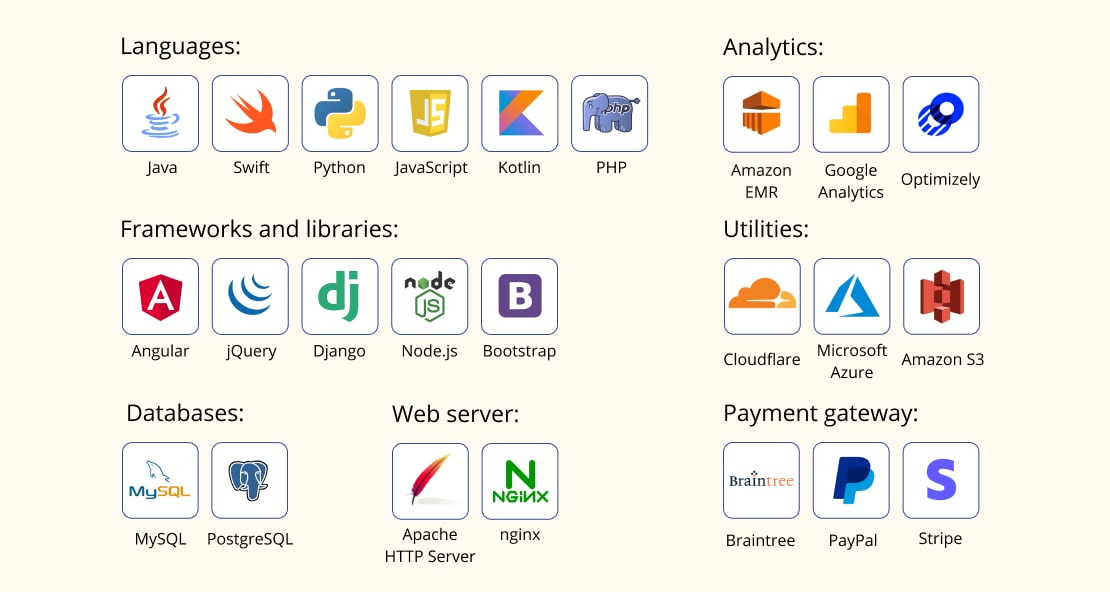How to Create an EHR System
The move from paper records to electronic medical records (EMR) has been a long and winding road for the healthcare industry. While EHR systems have been the torment of some healthcare professionals’ existence, their adoption is critical to increasing earnings and providing a sophisticated standard of care to patients.
EHR systems can empower health organizations by providing extensive access to patients’ personal health information, allowing doctors to create a medical system that prioritizes prevention over treatment.
According to a survey by Medical Economics, 87% of physicians are known to use an EMR or EHR system.
By December 31, 2014, approximately 83% of physicians in the United States were utilizing EHRs, according to the HealthIT.gov dashboard.l
According to another survey, people spend $117,672 per year on EHRs, which is about $31,710 more than their annual budget.

Given the facts and figures presented above, it’s clear that EHRs will continue to progress in 2022 for both doctors and patients.
If your health organization has been relying on manual health records since the dawn of time, it may be time to reconsider your approach. Your healthcare facility should not be left behind in this day and age, when computerized and sophisticated technology are the standard.
For the past years, we’ve been providing a great number of high-quality software solutions to the healthcare industry, and this time would like to share our experience in building EHR (electronic health records) systems.
What Is an EHR System?
EHR software is the system that connects data from different clinics, specialists, and labs to get a complete picture of a patient’s health. EHR systems have more features and can do more jobs than EMR systems, but they take more time and resources to develop, install, certify, and maintain. It means that the same EHR can be managed by multiple healthcare providers working in different locations or even countries.
Benefits of Using an EHR System
The main idea of implementing any technologies into any industry is simplifying everyday tasks for people working in the sphere and providing services of the best possible quality as well as improving management and analytics. The benefits of an EHR system deployment include the following:
Better Level of Healthcare
The access to all the patient’s medical history simplifies accurate diagnostics, decreases the number of human mistakes, improves the doctor’s control over the compliance of treatment plans, and much more.
Improved Customer Service
Going digital not only assures the protection of patient data, but it also streamlines doctor communication and allows them to easily share patient records. An EHR can warn a doctor of life-threatening allergies, diseases, and other essential information if a patient is unconscious or unable to communicate. EHRs give patients access to information and resources, which leads to more effective treatment methods.
Better Management and Analytics
Having access to all the existing data across your organization and to analytical tools provided by IT, it is easier to manage processes and staff working hours, predict expenses and equipment repairments/updates, and plan further development.
Must-Have Features of an EHR System
Each EHR system has its unique design and some features but the core functionality is the same for most of the solutions. What features should every EHR system have?
Electronic Document Management
The main feature is a fast-running electronic system that efficiently maintains all healthcare-related documents and data. Just make sure that employees and doctors are familiar with the system’s operation so that no problems arise later on.
Informative Profiles
Electronic health records systems should obviously contain records about patients. They include all the existing information about a person’s health: full medical history, allergies, previous and actual treatment plans, laboratory and test results, ultrasound scan and radiology images, etc. Being kept in a single profile, this data allows doctors to make a more accurate diagnosis and consultations, monitor the effectiveness of the cure, prescribe the best suitable medicines, and so on.
Security
Since an electronic health record system stores a huge amount of sensitive data about patients’ health, security is one of the most important features to care about. It should be as elaborate and strong as possible.
Intuitive User Interface
The key mission of such a software solution is to make things easier. At the same time, an EHR system is created to be used by all the people involved in the healthcare process: from doctors and pharmacists to ordinary patients with different backgrounds and levels of education. That is why it requires a thoughtful approach to UX/UI design in order to be easy-to-use for everyone.
Patient Portal
The first benefit of this feature is reducing nurses’ paperwork and time people spend in the clinics because the new patients can fill in the introduction forms by themselves and from any place they want. In the future, there will be no need to provide the same info again.
Using this feature patients also can check their treatment plans, see the recommended vaccinations, get notifications about upcoming appointments and ready laboratory results as well as see and schedule them.
E-Prescribing
Making e-prescriptions simplifies the job for everyone: pharmacists have no need to make out the doctors’ messy handwriting while the practitioners can easily choose the required medicine names and see if they can be taken together without additional side-effects. There are also benefits for patients: while they are making their way from the doctor’s office to a certain pharmacy, their order is being packed. So, entering the pharmacy, they just have to pick up their medicines and pay for them.
Prescriptions Management
This feature is critical for doctors since it allows them to prescribe medications at their convenience through a system.It is also beneficial to patients because it saves them time and effort from standing in large lines and waiting for their turn to receive medications from physicians or pharmacies.
Tailor-Made Charts
One of the most striking features of the electronic data management system is the ability to create custom charts. The ability to create charts on the system is a hidden luxury, since it saves time and lowers the risk of errors. You can also use the algorithms to efficiently analyze data.
Instant Messaging
This feature allows doctors and patients to communicate more effectively and efficiently. The text chat feature in the EHR system is a game-changer, and it can be upgraded with a photo upload capability later. This enables patients to give doctors photographs of any symptoms they are experiencing.
Appointment Scheduling
The system has a built-in calendar feature that allows patients to schedule appointments and doctors to reschedule them if necessary. There’s also a section for feedback in case one of the two needs to submit any comments or inform the other in the event of an emergency.
Comprehensive Reports
You can create regular reports and keep updating them over time to get a comprehensive picture of the healthcare process. Both doctors and patients benefit from these reports, as the former can keep track of test results and prescriptions, while the latter can see how effective the treatment has gotten over time.
How to Build an EHR System: Things to Consider
When building an EHR system, there are a number of significant things to take into account. We are going to mention two of the most significant.
Certification
Since an EHR software system is supposed to be used by a number of healthcare institutions and keep important data, it has to prove its reliability by compliance with the core industry standards and getting the required certificates. To legally work with the US healthcare market, the EHR system has to be HIPAA (Health Insurance Portability and Accountability Act) and ONC-ATCB compliant. The analogs demanded to work with the European Union are GDPR (General Data Protection Regulation) and EutoRec accordingly. These are just the most significant required compliances but there are many more legal details to consider, depending on the characteristics and functionality of a particular EHR system.
Without all the necessary documents it is forbidden to distribute the EHR software.
Storage
One more important decision to make is what type of storage to use: on-premise or cloud. To make the choice simpler, here are the most notable benefits each type provides:

If the choice is still hard, there is also an option to unite both storages in a hybrid solution. An on-premise server will allow accessing heavy data quickly while the cloud will be helpful for data backup and recovery.
Security
When it comes to the adoption of electronic health records, the most important obstacle to overcome is patient privacy and data security. Because of the sensitive nature of the information contained in electronic health records, improved security solutions are necessary to address these concerns. It is critical that security mechanisms encompass the wide range of risks that exist in healthcare.
EHR Software Development Tech Stack
There is no single right answer when it comes to the tech stack for EHR software development. Every IT company has its own set of technologies that it considers to be the best for implementing healthcare solutions.
There are some technologies and industry trends which are more mainstream than others. Python, for example, is currently one of the most widely used programming languages. It is regarded as one of the most secure (it complies with HIPAA) and versatile languages available.
However, those are just suggestions; if you don’t want to utilize a specific programming language or framework for whatever reason, you can always seek an alternative. Here’s a list of the most commonly used technologies in EHR development.

Bottom Line
Health organizations can use an EHR to deliver better patient experience while also being more efficient. A well-designed EHR system helps health workers to focus on patients rather than administrative or documentation tasks, allowing them to maximize profits and remain compliant.
The last thing we would like to mention here is the importance of finding an appropriate software development company to become your reliable partner in building an EHR system. We recommend going with the custom hospital software development company that already has relevant expertise and experience in the sphere. SCAND has already created a number of EHR systems for a variety of customers, here is a sample of one of them.












